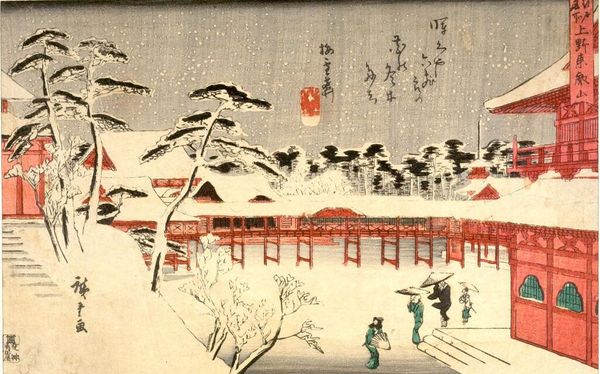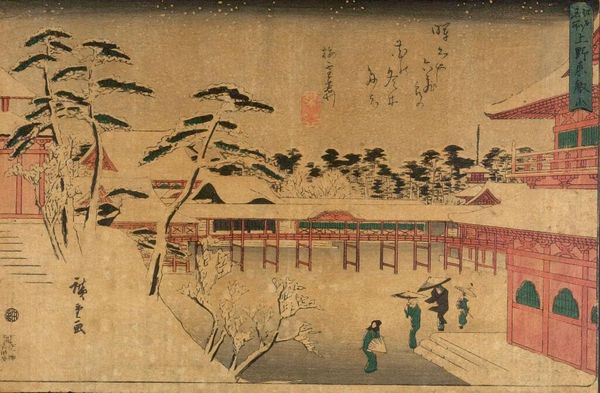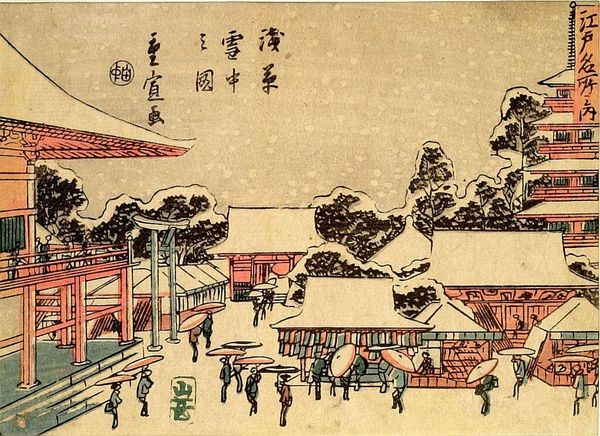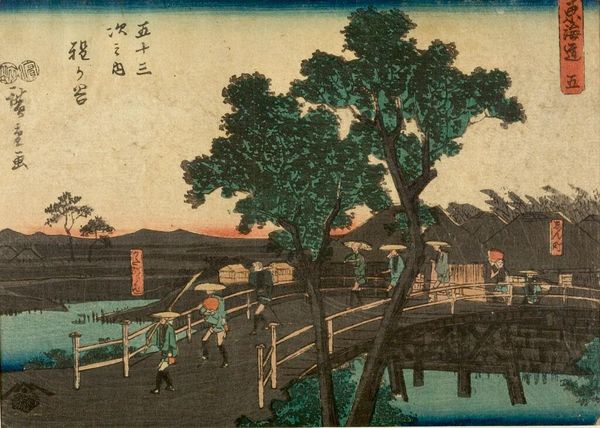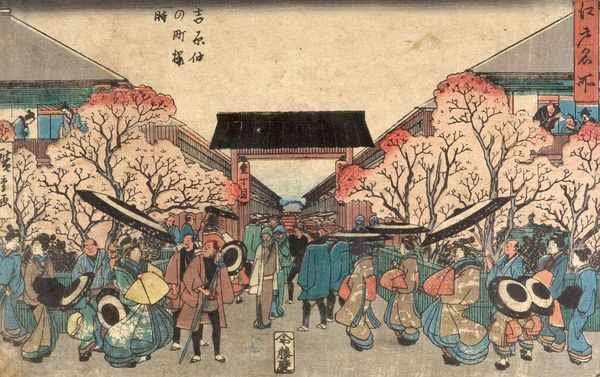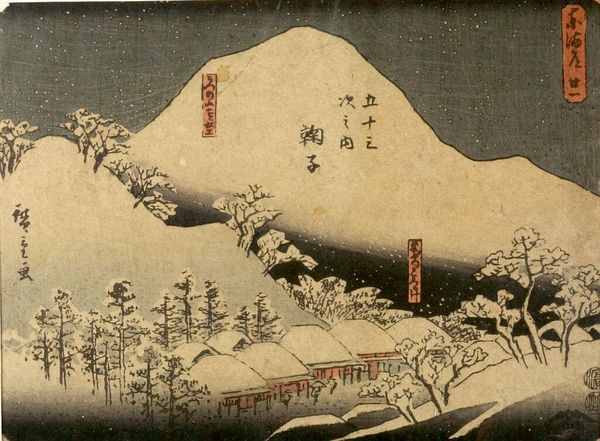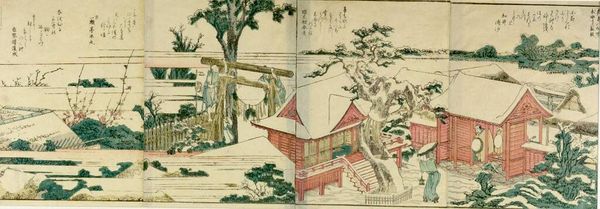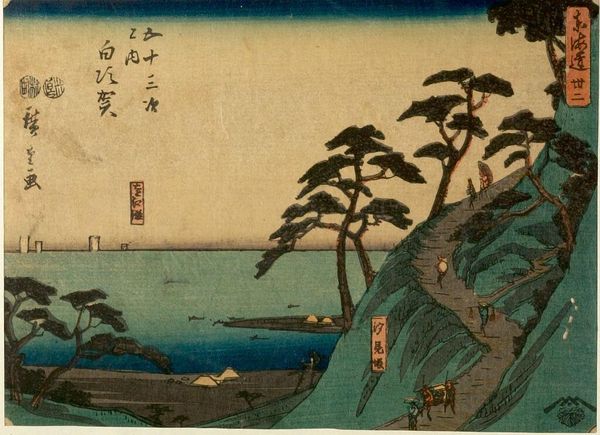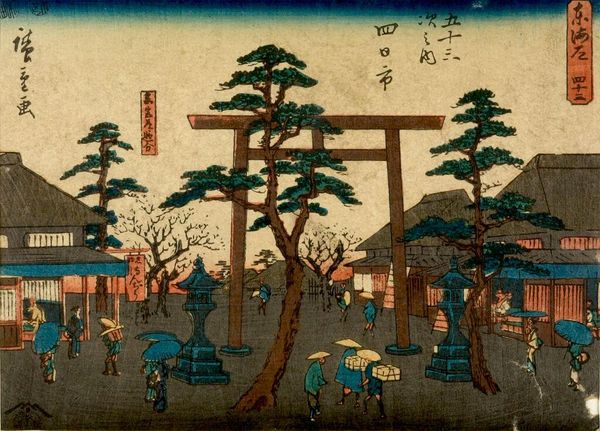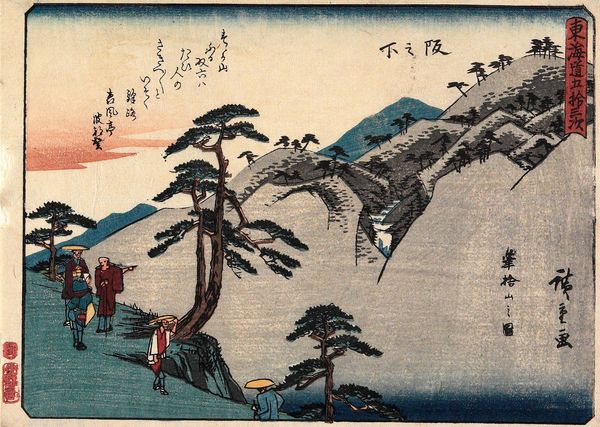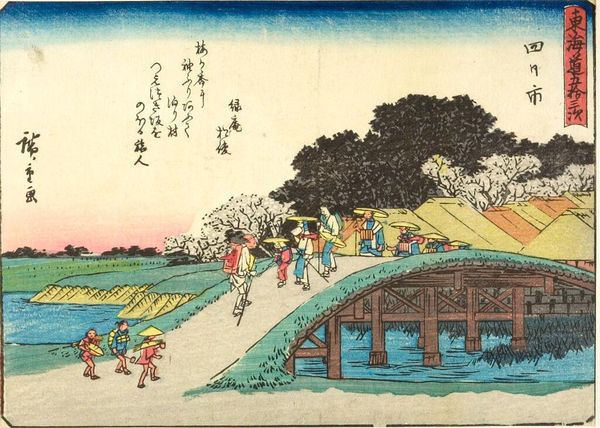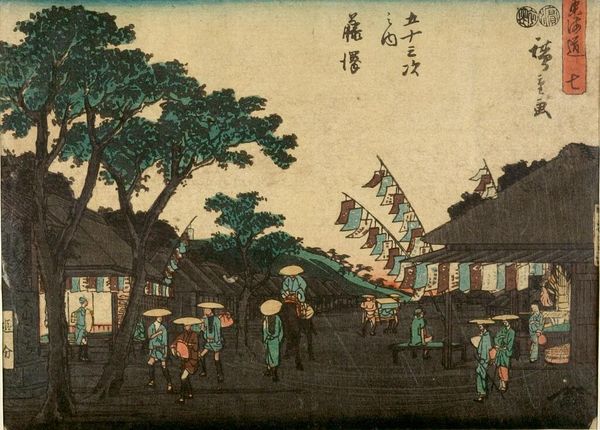
TÅeizan Temple at Ueno (Ueno TÅeizan), from the series Famous Places in Edo (Edo meisho) c. 20th century
0:00
0:00
Copyright: CC0 1.0
Curator: Hiroshige's "Tōeizan Temple at Ueno," from his series "Famous Places in Edo," captures a snow-covered temple scene. Editor: The cool palette and the stark lines create a sense of stillness—almost as if time is suspended within this landscape. Curator: This work provides insight into how sacred spaces were integrated into the daily lives of people within Edo society, while the figures hint at the gendered experience of space. The women on the left wear full kimonos, while the male figure strides ahead. Editor: The artist's meticulous use of line to define forms, particularly in the architectural structures, is remarkable. The red and blue accents provide a stark contrast to the otherwise monochrome setting. Curator: Absolutely, and understanding the social context, with its rigid class structures, allows us to interpret the spatial dynamics within the temple grounds, revealing how access and movement were dictated by social standing. Editor: Thinking about the composition, the eye is led through the scene by the converging lines, pausing at the human figures, yet always returning to the temple as the focal point. A study of perspective and point of view provides an interesting insight here. Curator: Indeed, a glimpse into a time when walking through a temple space, as portrayed here, could symbolize one's own location within the social landscape. Editor: Ultimately, it’s the tension between the formal elements and the historical context that makes this work so compelling.
Comments
No comments
Be the first to comment and join the conversation on the ultimate creative platform.

